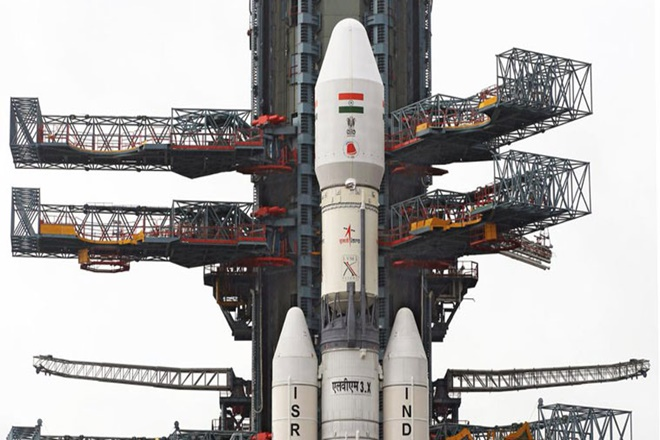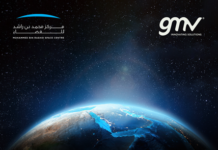
The Indian Space Research Organisation (ISRO) on Monday will be launching India’s heavy-lift rocket GSLV Mark III carrying the 3136 kg communication satellite, GSAT-19 into a Geo-synchronous Transfer Orbit (GTO) in space from Sriharikota in Andhra Pradesh. The 25-and-a-half hour countdown for the launch began at 3.58 pm on Sunday.
Called the ‘Fat Boy Satellite’, the GSLV Mark III-D1 rocket will be launched at 5.28 pm from the second launch pad of the Satish Dhawan Space Centre at Sriharikota, that is around 120 kms from Chennai. The vehicle is scheduled to launch the GSAT-19 into the GTO at 16.20 minutes after lift off.
The GSLV Mark III, described as a ‘game-changer’, is capable of transporting a heavier 4-tonne communications satellite into a GTO that is about 36-thousand kilometres high during its farthest point from the Earth and 170 kilometers during its nearest point. According to a senior space scientist, it’s launch will open up opportunities for India to launch 4-tonne class of satellites of foreign countries.
On the significance of the launch, ISRO Chairman A S Kiran Kumar said the mission is important as it was the heaviest rocket ever to be launched from the country’s own soil.
This ISRO mission will also extend India’s communication resources as a single satellite will be equivalent to having a constellation of six to seven of the older variety of communication satellites in space. The satellite would study the nature of the charged particles and influence of space radiation on spacecraft and electronic components.
According to the PTI, former ISRO Chairman K Radhakrishnan said that the launch of first developmental flight of the rocket is a “great milestone” as ISRO is almost doubling the capacity to launch satellite from 2.2-2.3 tonnes to 3.5-4 tonnes.
“Today if India has to launch communication satellites beyond 2.3 tonnes, we have to go abroad (to launch them). We (will) have self-reliance in launching communication satellites (once GSLV Mk III becomes operational), and also we will be able to attract foreign customers. It’s rather a simpler vehicle, and a vehicle with better payload fraction. And it’s going to be future workhorse vehicle (of ISRO),” he said.
Until now, ISRO had to depend on foreign launchers for communication satellites weighing more than 2,300 kg. The GSLV Mk III will be able to lift payloads of up to 4,000 kg into the GTO and 10,000 kg into the Low Earth Orbit. It is a three-stage vehicle with indigenous cryogenic upper stage engine. Apart from the cryogenic engine, designated C25, carrying about 28 tonnes of propellants, it has two solid strap-on motors (S200) and a core liquid booster (L110).
The successful launch of the GSLV MK III will be another major step by ISRO towards being self-reliant in the country’s space programme. Union Minister Jitendra Singh on Monday congratulated the space agency for adding another feather to India’s launch list of successful satellites. He tweeted,”Yet another feather in the much decorated cap of @ISRO.”
Space test
|


















